Visit to download the full and correct content document: https://ebookmass.com/product/regional-water-security-robert-c-brears/
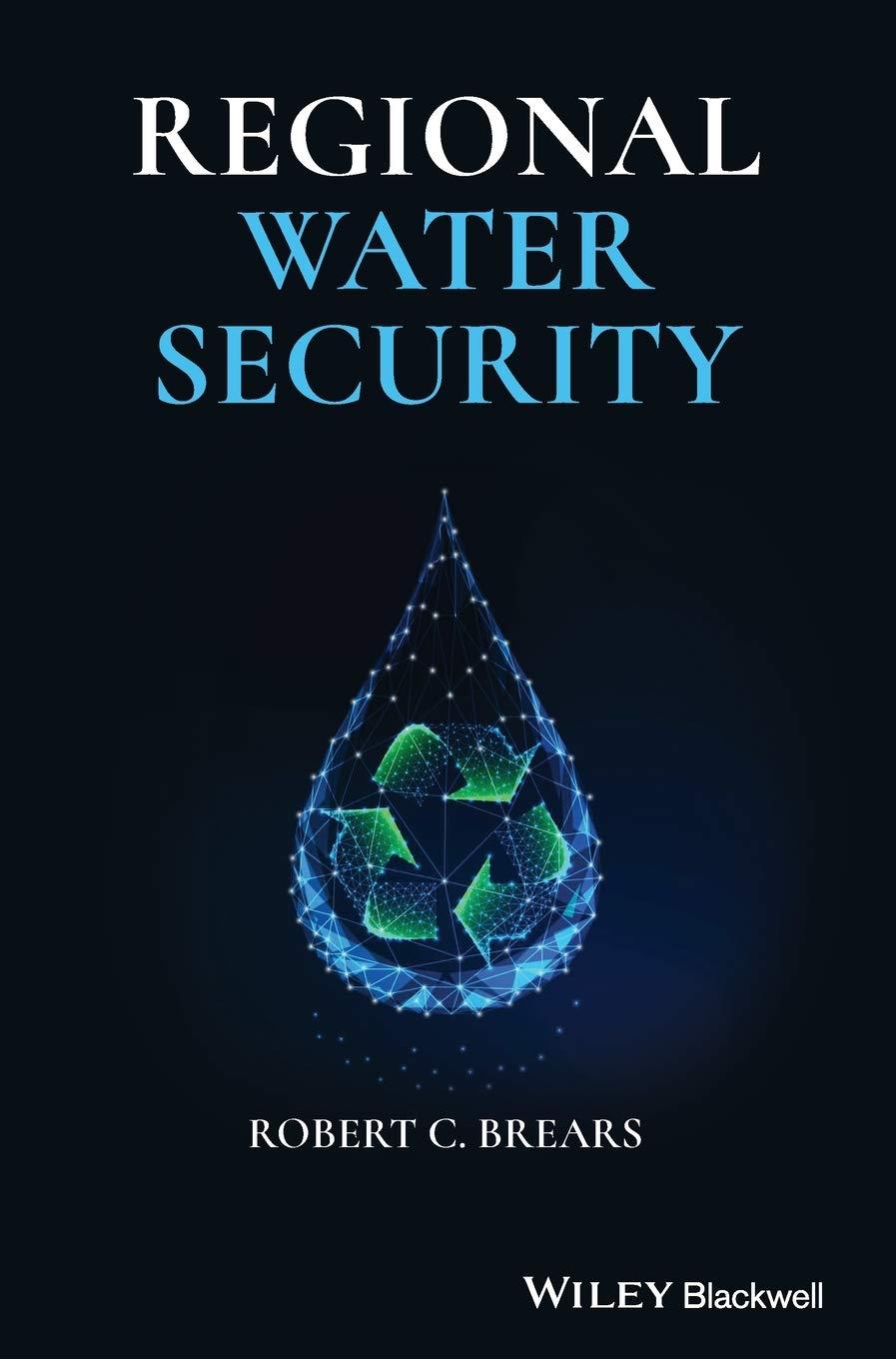
More products digital (pdf, epub, mobi) instant download maybe you interests ...

The Palgrave Encyclopedia of Urban and Regional Futures
Robert Brears
https://ebookmass.com/product/the-palgrave-encyclopedia-of-urbanand-regional-futures-robert-brears/
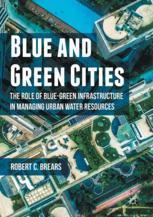
Blue and Green Cities: The Role of Blue-Green Infrastructure in Managing Urban Water Resources 1st Edition Robert C. Brears
https://ebookmass.com/product/blue-and-green-cities-the-role-ofblue-green-infrastructure-in-managing-urban-water-resources-1stedition-robert-c-brears/
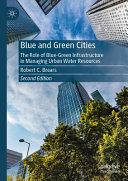
Blue and Green Cities: The Role of Blue-Green Infrastructure in Managing Urban Water Resources (2nd Edition) Robert C. Brears
https://ebookmass.com/product/blue-and-green-cities-the-role-ofblue-green-infrastructure-in-managing-urban-water-resources-2ndedition-robert-c-brears/
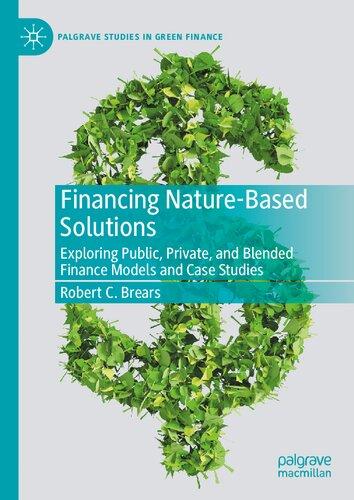
Financing Nature-Based Solutions: Exploring Public, Private, and Blended Finance Models and Case Studies
Robert C. Brears
https://ebookmass.com/product/financing-nature-based-solutionsexploring-public-private-and-blended-finance-models-and-casestudies-robert-c-brears/
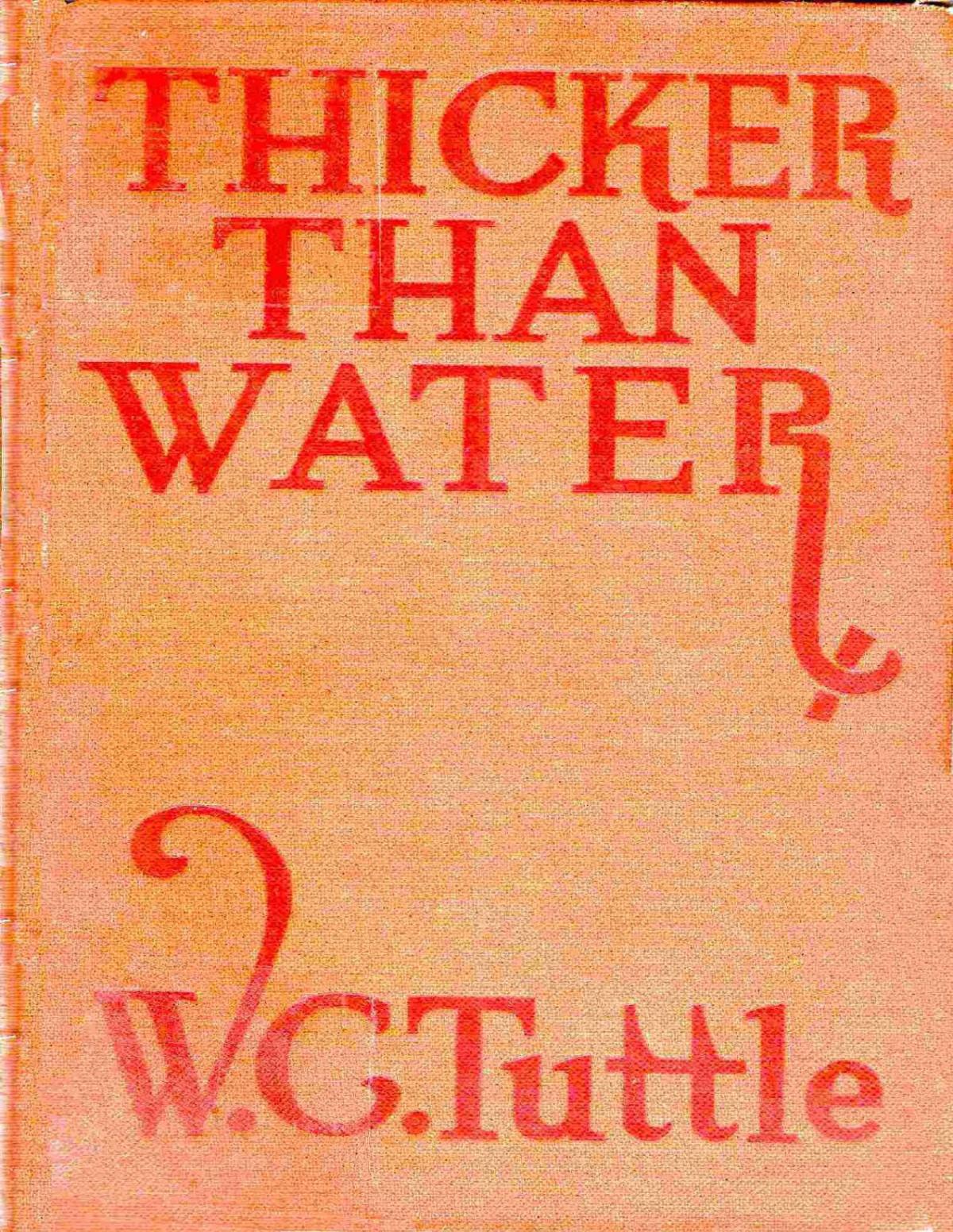
Thicker than water W. C. Tuttle
https://ebookmass.com/product/thicker-than-water-w-c-tuttle/
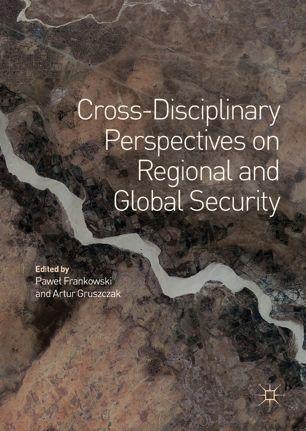
Cross-Disciplinary Perspectives on Regional and Global Security 1st ed. Edition Pawe■ Frankowski
https://ebookmass.com/product/cross-disciplinary-perspectives-onregional-and-global-security-1st-ed-edition-pawel-frankowski/
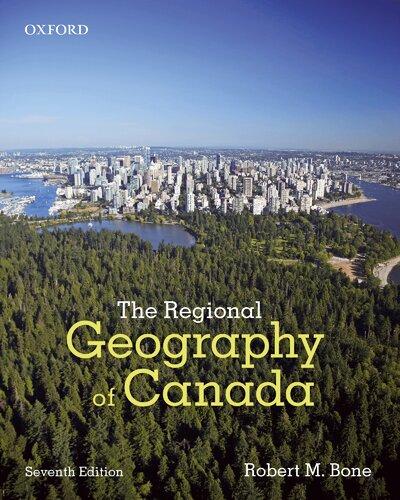
The Regional Geography of Canada 7th Edition Robert M. Bone
https://ebookmass.com/product/the-regional-geography-ofcanada-7th-edition-robert-m-bone/

Minimalist
Parsing Robert C. Berwick
https://ebookmass.com/product/minimalist-parsing-robert-cberwick/
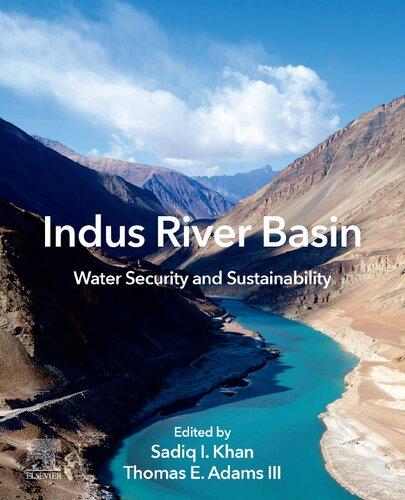
Indus River Basin. Water security and sustainability Sadiq Ibrahim Khan
https://ebookmass.com/product/indus-river-basin-water-securityand-sustainability-sadiq-ibrahim-khan/
Regional Water Security
Regional Water Security
Robert C. Brears
Christchurch, New Zealand
This edition first published 2021 © 2021 John Wiley & Sons Ltd
All rights reserved. No part of this publication may be reproduced, stored in a retrieval system, or transmitted, in any form or by any means, electronic, mechanical, photocopying, recording or otherwise, except as permitted by law. Advice on how to obtain permission to reuse material from this title is available at http://www.wiley.com/go/permissions.
The right of Robert C. Brears to be identified as the author of this work has been asserted in accordance with law.
Registered Offices
John Wiley & Sons, Inc., 111 River Street, Hoboken, NJ 07030, USA
John Wiley & Sons Ltd, The Atrium, Southern Gate, Chichester, West Sussex, PO19 8SQ, UK
Editorial Office
9600 Garsington Road, Oxford, OX4 2DQ, UK
For details of our global editorial offices, customer services, and more information about Wiley products visit us at www.wiley.com.
Wiley also publishes its books in a variety of electronic formats and by print-on-demand. Some content that appears in standard print versions of this book may not be available in other formats.
Limit of Liability/Disclaimer of Warranty
The contents of this work are intended to further general scientific research, understanding, and discussion only and are not intended and should not be relied upon as recommending or promoting scientific method, diagnosis, or treatment by physicians for any particular patient. In view of ongoing research, equipment modifications, changes in governmental regulations, and the constant flow of information relating to the use of medicines, equipment, and devices, the reader is urged to review and evaluate the information provided in the package insert or instructions for each medicine, equipment, or device for, among other things, any changes in the instructions or indication of usage and for added warnings and precautions. While the publisher and authors have used their best efforts in preparing this work, they make no representations or warranties with respect to the accuracy or completeness of the contents of this work and specifically disclaim all warranties, including without limitation any implied warranties of merchantability or fitness for a particular purpose. No warranty may be created or extended by sales representatives, written sales materials or promotional statements for this work. The fact that an organization, website, or product is referred to in this work as a citation and/or potential source of further information does not mean that the publisher and authors endorse the information or services the organization, website, or product may provide or recommendations it may make. This work is sold with the understanding that the publisher is not engaged in rendering professional services. The advice and strategies contained herein may not be suitable for your situation. You should consult with a specialist where appropriate. Further, readers should be aware that websites listed in this work may have changed or disappeared between when this work was written and when it is read. Neither the publisher nor authors shall be liable for any loss of profit or any other commercial damages, including but not limited to special, incidental, consequential, or other damages.
Library of Congress Cataloging-in-Publication Data
Names: Brears, Robert C., author.
Title: Regional water security / Robert C. Brears, Christchurch, New Zealand.
Description: Hoboken, NJ, USA : Wiley-Blackwell, 2021. | Includes bibliographical references and index.
Identifiers: LCCN 2020040377 (print) | LCCN 2020040378 (ebook) | ISBN 9781119661139 (cloth) | ISBN 9781119661115 (adobe pdf) | ISBN 9781119661122 (epub)
Subjects: LCSH: Water-supply. | Water security–Government policy. | Water quality management.
Classification: LCC TD345 .B75 2021 (print) | LCC TD345 (ebook) | DDC 333.91–dc23
LC record available at https://lccn.loc.gov/2020040377
LC ebook record available at https://lccn.loc.gov/2020040378
Cover Design: Wiley
Cover Images: Inna Bigun/Shutterstock
Set in 9.5/12.5pt STIXTwoText by SPi Global, Pondicherry, India
Acknowledgments
First, I wish to first thank Andrew Harrison for being a visionary who enables books like mine to come to fruition. Second, I wish to thank Mum, who has a great interest in the environment and has supported me in this journey of writing the book.
Introduction
Regional water security around the world is at risk from both climatic and nonclimatic challenges impacting water quantity and water quality. For instance, climate change is projected to decrease the availability of renewable surface water and groundwater resources significantly, intensifying competition for water resources among users, as well as to reduce the availability of good-quality drinking water, even with conventional treatment processes (Arnell et al. 2015; Brears 2016a). Rapid population growth and urbanization will lead to increased water scarcity and ecosystem degradation due to excess water withdrawal, eutrophication, land-use changes, and pollution (Brears 2016a, 2018), while peri-urban water competition is likely to increase with further urbanization (McDonald et al. 2014). With economic growth, global demand for water will significantly increase due to manufacturing, industry, and domestic consumption (PwC 2015; UN Water 2014). At the same time, household water demand is projected to increase due to higher incomes and living standards, as well as a shift in diet to water-intensive meat and dairy products (Harlan et al. 2009; Kearney 2010; UNESCO 2012; UN Water 2014). In many locations, a large portion of the water infrastructure is approaching or has already reached the end of its useful life, with aging infrastructure often resulting in high water loss from physical leakage (Lam et al. 2017). In addition, sewage and contaminated groundwater can enter leaking pipes and travel throughout the water distribution network, causing public health concerns, such as outbreaks of gastrointestinal illness (Fox et al. 2016; Säve-Söderbergh et al. 2017). Between now and 2040, it is projected that the amount of energy used in the water sector will double, with the most substantial increase coming from desalination, followed by large-scale water transfer and increasing demand for (higher levels of) wastewater treatment (IEA 2016). Finally, by 2050, the world will require at the minimum 60 percent more food production to maintain current consumption patterns, leading to a significant increase in the volume of global water withdrawn for irrigation. Agriculture is one of the most significant contributors to non-point-source pollution impacting rivers, streams, and lakes – as well as wetlands and groundwater supplies – harming public health, creating dead zones in water, increasing water treatment costs, and impacting industries dependent on clean water (FAO 2015; Brears 2016b).
Regional development, which can be defined as community development (social, economic, environmental, technological, cultural, and recreational) of a particular territory, has proved challenging in practice as sustainable development at the regional level implies
the implementation of complementary and coordinated actions in different areas, resulting in economic growth that also supports social and environmental objectives (Jovovic et al. 2017). In the context of water resource management, managing water in regions to achieve various economic, environmental, and social goals is particularly challenging given that the majority of the world’s water resources are transboundary, crossing both intra- and interstate administrative and political lines.
In response to decreasing water quantity and diminishing water quality, water authorities, at multiple levels of governance around the world, are implementing a variety of policies to encourage the transition toward water security for both humans and nature, focusing on balancing rising demand with limited – and often variable – supplies of water and developing green infrastructure to mitigate climatic risks and improve water quality, all the while realizing multiple regional development goals.
Traditionally, water managers have relied on large-scale, supply-side infrastructural projects such as dams and reservoirs to meet increased demands for water (supply-side management). However, these projects are costly, both economically and environmentally. Also, with most water resources being transboundary, supply-side projects can create political tensions. Therefore, there is a need to move toward managing actual demand for water (demand management), as ultimately it is society’s attitudes and behaviors toward water that determine the amount of that needs to be supplied. Demand management involves making better use of existing water supplies before attempting to increase them further. Specifically, it promotes water conservation under both normal and abnormal conditions, through changes in practice, culture, and people’s attitudes toward water resources. It seeks to reduce the loss and misuse of water, optimize its use, and facilitate major financial and infrastructural savings by minimizing the need to meet increasing demand with new water supplies. Demand management also involves the development of alternative water supplies as a means of diversification in order to meet various potable and nonpotable water needs (Brears 2016a).
The most common means of mitigating risks from climatic extremes has been increasing investment in conventional – or “gray” – infrastructures such as dams and levees. However, engineers and decision-makers have come to realize the economic and environmental costs of these solutions, including high capital costs, amplified downstream flooding risks, and ecosystem degradation. As such, there has been a turn to more long-term economically and environmentally sustainable “green” infrastructure solutions that provide equivalent or similar benefits to gray infrastructure. For instance, gray infrastructure utilizes natural and seminatural systems to manage excess water while enhancing ecosystems. It can also be used to mitigate the impacts of droughts, ensuring there is sufficient water for both humans and nature. Furthermore, gray infrastructure can purify water using natural filtration processes. A unique feature of gray infrastructure is that it can appreciate over time (Brears 2018).
Nonetheless, our understanding of the role regional water managers have in implementing demand management strategies and green infrastructure to enhance water security and reduce environmental degradation lags significantly behind our engineering knowledge of water resources management. As such, little has been written on the actual implementation of green policy innovations across entire regions that not only ensure water security for humans but also restore ecosystems and the numerous services they provide. Also, because the application of demand management and green infrastructure requires holistic
planning, little has been written on how innovative policies have been developed to ensure they fulfil multiple functions and policy goals and create multiple benefits for society and ecosystems.
Regional Water Security provides new research on policy innovations that promote the application of demand management and green infrastructure in managing water resources across regions sustainably. In particular, it offers in-depth case studies that illustrate how different regions – of differing climates, lifestyles, and income levels – are implementing policy innovations which promote the application of demand management and green infrastructure to achieve regional water security for humans while protecting and restoring the natural environment. A summary runs as follows:
Chapter 2: Water Security This chapter discusses the concept of water security and defines what it means at the regional level. It then looks at the various climatic and nonclimatic challenges to regional water security.
Part I: Demand Management
Chapter 3: Water Allocation This chapter discusses how water allocation involves implementing technologies and establishing arrangements for sharing existing resources among users equitably and to the maximum benefit of all, including the environment. Technologies discussed (with examples of their implementation around the world) include basin-level modelling and seasonal forecasting, seasonal water rationing, and water reallocation.
Chapter 4: Water Augmentation This chapter discusses how water augmentation aims to increase the available supply of water through active recharge or protection of water recharge areas. It provides global examples of technologies being implemented, including the combined use of surface and groundwater, aquifer recharge, and source water protection.
Chapter 5: Water Efficiency This chapter discusses how residential, irrigation, and industrial water efficiency can be increased through more effective leak detection and repair of water pipes, improved irrigation efficiency to minimize water use within the agricultural sector while continuing to maintain crop productivity rates, and the use of new and more efficient technologies in industrial facilities.
Chapter 6: Water Reuse and Water Recycling This chapter discusses a range of water reuse and water recycling technologies and initiatives that have been implemented around the world, including rainwater and stormwater harvesting systems, potable and nonpotable reuse systems, and other types of alternative water source technologies.
Part II: Green Infrastructure
Chapter 7: Green Buildings and Green Streets This chapter reviews the various types of green infrastructure implemented at the building and street level. In particular, it looks at the use of green roofs, blue roofs, rain barrels, rainwater harvesting systems, and green streets with permeable pavement and underground systems to capture and purify stormwater.
Chapter 8: Green Parks and Urban Forests This chapter discusses how green parks and urban forests intercept and filter stormwater runoff, preventing flooding and improving water quality, while at the same time providing multiple co-benefits.
Chapter 9: Water Bodies This chapter discusses various green infrastructure strategies that can be implemented to decrease flood risk and improve water quality while protecting, conserving, and enhancing natural ecosystems, including retention ponds and riparian buffers, as well as river engineering, floodplain restoration, wetland restoration, and green corridor initiatives.
Chapter 10: Agriculture and Forestry This chapter discusses how natural water retention measures, which are a form of green infrastructure, can play an essential role in catchment-scale flood risk management by enhancing or restoring natural hydrological processes, including interception, evapotranspiration, infiltration, and ponding.
Part III: Case Studies, Best Practices, and Conclusions
Chapter 11: Case Studies of Regions Implementing Demand Management and Green Infrastructure to Achieve Regional Water Security This chapter provides case studies of leading locations around the world that are implementing a variety of demand management and green infrastructure initiatives to achieve regional water security.
Chapter 12: Best Practices This chapter discusses a range of best practices identified in the application of demand management and green infrastructure that can be implemented by regions attempting to achieve regional water security for humans while at the same time protecting and restoring the natural environment.
Chapter 13: Conclusions
References
Arnell, N.W., S.J. Halliday, R.W. Battarbee, R.A. Skeffington, and A.J. Wade. (2015).
“The Implications of Climate Change for the Water Environment in England.” Progress in Physical Geography: Earth and Environment 39, no. 1: 93–120.
Brears, R.C. (2016a). Urban Water Security. Hoboken, NJ: John Wiley & Sons.
Brears, R.C. (2016b). “The Water–Food Nexus and the Role of Demand Management.” Future of Food: Journal on Food, Agriculture and Society 4, no. 3: 73–74.
Brears, R.C. (2018). Blue and Green Cities: The Role of Blue-Green Infrastructure in Managing Urban Water Resources. London: Palgrave Macmillan.
FAO. (2015). “Towards a Water and Food Secure Future: Critical Perspectives for PolicyMakers.” http://www.fao.org/3/a-i4560e.pdf (accessed October 9, 2020).
Fox, S., W. Shepherd, R. Collins, and J. Boxall. (2016). “Experimental Quantification of Contaminant Ingress into a Buried Leaking Pipe During Transient Events.” Journal of Hydraulic Engineering 142, no. 1: 04015036.
Harlan, S.L., S.T. Yabiku, L. Larsen, and A.J. Brazel. (2009). “Household Water Consumption in an Arid City: Affluence, Affordance, and Attitudes.” Society & Natural Resources 22, no. 8: 691–709. IEA. (2016). “WEO-2016 Special Report: Water–Energy Nexus.” https://webstore.iea.org/ weo-2016-special-report-water-energy-nexus (accessed October 9, 2020).
Jovovic, R., Draskovic, M., Delibasic, M., and Jovovic, M. (2017). “The Concept of Sustainable Regional Development – Institutional Aspects, Policies and Prospects.” Journal of International Studies 10, no. 1.
Kearney, J. (2010). “Food Consumption Trends and Drivers.” Philosophical Transactions of the Royal Society of London. Series B, Biological Sciences 365, no. 1554: 2793–2807.
Lam, K.L., S.J. Kenway, and P.A. Lant. (2017). “Energy Use for Water Provision in Cities.” Journal of Cleaner Production 143: 699–709.
McDonald, R.I., K. Weber, J. Padowski, M. Flörke, C. Schneider, P.A. Green, et al. (2014). “Water on an Urban Planet: Urbanization and the Reach of Urban Water Infrastructure.” Global Environmental Change 27: 96–105.
PwC. (2015). “The World in 2050: Will the Shift in Global Economic Power Continue?” http:// www.pwc.com/gx/en/issues/the-economy/assets/world-in-2050-february-2015.pdf (accessed October 9, 2020).
Säve-Söderbergh, M., J. Bylund, A. Malm, M. Simonsson, and J. Toljander. (2017). “Gastrointestinal Illness Linked to Incidents in Drinking Water Distribution Networks in Sweden.” Water Research 122: 503–511.
UNESCO. (2012). “Managing Water Under Uncertainty and Risk.” http://www.unesco.org/ new/fileadmin/MULTIMEDIA/HQ/SC/pdf/WWDR4%20Volume%201-Managing% 20Water%20under%20Uncertainty%20and%20Risk.pdf (accessed October 9, 2020).
UN Water. (2014). “Partnerships for Improving Water and Energy Access, Efficiency and Sustainability.” http://www.un.org/waterforlifedecade/water_and_energy_2014/pdf/ water_and_energy_2014_final_report.pdf (accessed October 9, 2020).
Water Security
Introduction
The United Nations defines water security as “the capacity of a population to safeguard sustainable access to adequate quantities of acceptable quality water for sustaining livelihoods, human well-being, and socio-economic development, for ensuring protection against water-borne pollution and water-related disasters, and for preserving ecosystems in a climate of peace and political stability” (UN Water 2013). Societies can achieve water security when they: successfully manage their water resources and services to satisfy household water and sanitation needs in all communities; support productive economies in agriculture, industry, and energy; develop vibrant, livable cities and towns; restore healthy rivers and ecosystems; and build resilient communities that can adapt to change. In this context, this chapter will discuss the main dimensions to water security and the trends that impact its attainment, before going on to look at the role of demand management and green infrastructure in this area.
Dimensions to Water Security
There are five critical dimensions to achieving water security:
1) Household Water Security: The foundation and cornerstone of water security is what happens at the household level. Providing all people with reliable, safe water and sanitation services should be the top priority in all locations. Household water security is essential to eradicating poverty and supporting economic development.
2) Economic Water Security: Water is used for agricultural production, in industry, and to cool energy-generating plants. These uses must not be viewed in isolation from each other. The water–energy–food nexus raises awareness of the critical interaction of water uses in supporting economic activities. Economic water security measures the productive use of water to sustain economic growth in the food production, industry, and energy sectors.
3) Urban Water Security: The world is rapidly urbanizing, with cities becoming the drivers of the global economy. As such, urban water security is achieved through better water management and services in support of vibrant and livable water-secure cities.
4) Environmental Water Security: Commonly, regions around the world have prioritized economic growth over ecological objectives. There is now a shift toward green growth that focuses on broader sustainable development. Environmental water security is achieved through the restoration of rivers and ecosystems on the national and regional scales. The sustainability of development and improved lives depends on these natural resources.
5) Resilience to Water-Related Disasters: The building of resilient communities that can adapt to change and reduce risk from natural disasters related to water must be accelerated in order to minimize the impact of future disasters (ADB 2016).
Addressing Water Security Risks
Achieving water security means maintaining acceptable levels for four water risks:
1) Risk of Shortage (Including Droughts): Lack of sufficient water to meet demand – in both the short and the long term – from all water users (households, businesses, and the environment).
2) Risk of Inadequate Quality: Lack of water of adequate quality for a particular purpose or use.
3) Risk of Excess (Including Floods): Overflow of the normal confines of a water system (natural or built), or the destructive accumulation of water over areas that usually are not submerged.
4) Risk of Undermining the Resilience of Freshwater Systems: Exceedance of the coping capacity of surface and groundwater bodies and their interactions (the “system”) (possibly crossing tipping points and causing irreversible damage to the system’s hydraulic and biological functions).
All four risks need to be assessed in an integrated way, as interventions to reduce one can lead to increases in others. As such, a risk-based approach to water security is recommended. In particular, it is important to:
1) Know the Risks: A significant obstacle to water security is often a lack of knowledge about water risks and their scale. It is essential to understand such risks and anticipate and address all potential risk drivers, including socioeconomic trends, natural phenomena, and inadequate water and water-related policies.
2) Target the Risks: The acceptable level of water risk for a society should depend on the balance between economic, social, and environmental consequences and the cost of amelioration. However, eliminating risk is often technically impossible or prohibitively expensive.
3) Manage the Risks: Allocating water risks between residential, agricultural, industrial, and environmental uses raises significant questions. A risk-based approach allows for the assignment of risks to the actors who are likely to be able to manage them most efficiently. A risk-based approach also helps ensure an equitable distribution of risks among stakeholders and can help prevent the imposition of one group’s risk preferences on others (OECD 2016).
Changes in Water Quantity and Water Quality Affect Water Security
Changes in water quantity and water quality and associated societal interactions impact the ability to achieve water security. Table 2.1 outlines the effects of variations on water quality (Gunda et al. 2019; OECD n.d.), while the impacts of changes to water quantity are as follows:
● Reduced stream habitats.
● Depletion of soil moisture, with knock-on effects on plant growth, due to elevated rates of evaporation.
● Loss of or reduction in crop yields and production.
Table 2.1 Impacts of variable water quality.
Area of Impact
Examples
Urban and domesticIncreased water treatment and inspection costs
Maintenance costs from scouring and premature aging of infrastructure
Increased wastewater treatment costs with the implementation of more strict regulations
Emergency and clean-up costs from spills/accidents
Ecosystem health
Human health
Damage to freshwater and marine ecosystems (e.g., fish kill, habitat destruction, and loss of ecosystem services), which may require investment in additional or different gray infrastructure alternatives to replicate these services
Polluted water – the world’s most significant health risk, affecting the quality of life and public health; health service costs, loss of life expectancy, and emerging health costs are all associated with pollution events
Industrial productivityExclusion of contaminated water for industrial use, resulting in increased water scarcity and lower industrial productivity
Social values and tourism
Agricultural productivity
Scouring of infrastructure and clean-up costs from spills/accidents
Prohibition on recreational use (e.g., swimming, fishing, seafood gathering)
Beach closure
Impacts on esthetic, cultural, and spiritual values
Losses in fishing, boating, rafting, and swimming activities to other tourism activities or other ventures with superior water quality
Exclusion of contaminated water from irrigation, increasing water scarcity
Irrigation with contaminated water, causing damage to – and reduced productivity of – pasture and crops
Soil contamination, impacting livestock health and production
Commercial fisheriesDirect and indirect fish kill
Contamination of shellfish
Property values
Decline in waterfront property values due to unsightly pollution and odor
Source: Thushara Gunda et al., “Water Security in Practice: The Quantity-Quality-Society Nexus,” Water Security 6(2019); OECD, “Infographic – What Are the Impacts of Water Pollution?,” https://www.oecd.org/ water/infographic-impacts-of-water-pollution.htm.
● Minimal grass cover and loss of income from selling off stock.
● Loss of production in various water-using industries.
● Little recharge of groundwater, resulting in low spring flows (baseflows to rivers) and low groundwater levels.
● Low levels in major storage dams and lakes, and drying up of shallow bore springs and streams.
● Costly transport of water to rural residents.
● Restrictions on the use of water imposed by water authorities.
● Loss of tourism due to water use bans and water shortages.
● Decreased energy production due to higher river water temperatures, limiting the water’s use as a coolant, and water reservoirs dropping below an efficient level for hydropower facilities.
● Intensification of pollution by nutrients and pesticides as there is less water to dilute excess nutrients and toxic substances that have leached into water bodies, negatively affecting fish spawning and increasing algal blooms.
● Water-related diseases resulting from drinking insufficient amounts of water or water with high salinity (Hunter et al. 2010; Northland Regional Council 2011; Pierre Strosser et al. 2012; Abedin et al. 2019).
Trends Impacting Water Security
There are many trends impacting water security globally, including the following.
Climate Change
Climate change is likely to lead to shifts in precipitation patterns and snow cover, increasing the frequency of flooding and droughts. Higher temperatures will generally intensify the global hydrological cycle. In some parts of the world, annual precipitation levels will increase, while in other regions they will decrease. With snow limits pushed upward and less precipitation falling as snow, many locations will experience higher winter runoff and low summer flow rates. Climate change will increase the frequency and intensity of rainfall: for every 1 °C increase in temperature, the air can hold about 7% extra water vapor. In some locations, there may be an increase in the occurrence of flooding due to heavy rainfall events. Globally, it is estimated that the number of people affected by flooding will rise from 65 million in 2010 to 132 million in 2030. Meanwhile, it is estimated that for each degree of global warming, 7% of the world’s population is exposed to a decrease in renewable water resources of at least 20%. Already, more than 2 billion people live in countries experiencing high water stress. Some of the impacts of climate change on water resources are listed in Table 2.2 (IPCC 2014; US EPA 2017; EEA 2018; UN Water 2019a, n.d.; World Resources Institute 2020).
Water-Related Disasters
Water-related disasters account for 90% of the 1000 most severe disasters that have occurred since 1990. There are three primary hazards (floods, droughts, and extreme storms) that can lead to water-related disasters affecting people or economic goods, where there is insufficient preparedness.
Table 2.2 Impacts of climate change on water resources.
Impact Description
Increased droughtsClimate change is likely to increase the frequency of meteorological droughts (less rainfall) and agricultural droughts (less soil moisture) in many presently dry regions
Lower water qualityClimate change will alter streamflow and water quality
Increase in heavy precipitation events can lead to sewer systems and wastewater treatment plants being overwhelmed by the increased volumes of water
Heavy downpours can increase the amount of runoff into waterways, washing sediment, nutrients, pollutants, rubbish, animal waste, and other materials into water supplies, making them unusable, unsafe, or in need of water treatment
Lower snowmeltIn regions with snowfall, climate change has altered – and is likely to continue altering – streamflow seasonality
Reduced spring maximum snow depth and earlier spring snowmelt are leaving less snow in storage for dry summer months
Rising sea levelsFreshwater resources along coastal regions face risks from sea level rise
Rising sea levels and the occurrence of drought can increase the salinity of both surface water and groundwater through saltwater intrusion
Source: UN-Water, “Un-Water Policy Brief on Climate Change and Water,” (2019); IPCC, “The Fifth Assessment Report (Ar5) of the Intergovernmental Panel on Climate Change,” (2014), https://www.ipcc.ch/ assessment-report/ar5/; US EPA, “Climate Impacts on Water Resources,” https://19january2017snapshot. epa.gov/climate-impacts/climate-impacts-water-resources_.html; US EPA, “Climate Impacts on Water Resources,” https://19january2017snapshot.epa.gov/climate-impacts/climate-impacts-water-resources_. html; World Resources Institute, “The Number of People Affected by Floods Will Double between 2010 and 2030,” https://www.wri.org/blog/2020/04/aqueduct-floods-investment-green-gray-infrastructure.
Floods affect the highest number of people annually: over the period 1995–2015, they affected 2.3 billion, killed 157 000, and caused $662 billion in damage. Flooding can be classified into urban flooding, pluvial flooding (flash flooding), fluvial flooding (exceedance of river channel capacity, resulting in floodplain inundation), waterlogging, and coastal flooding. The immediate impacts include loss of human life, damage to property, destruction of crops, loss of livestock, and deterioration of health conditions due to waterborne diseases. Floods impact economic activities by damaging and disrupting communication links and infrastructure, including power plants, roads, and bridges. Meanwhile, disruption to industry can lead to loss of livelihood. Damage to infrastructure may have long-term impacts, such as interruptions to supplies of clean water, wastewater treatment, education, and healthcare. Increases in population growth and changes in land-use patterns have increased human vulnerability to floods (Doocy et al. 2013; Office of the Queensland Chief Scientist 2018).
Droughts accounted for 5% of all natural disasters between 1995 and 2015, affecting 1.1 billion people, killing 22 000, and causing $100 billion in damage. They can impact the environment and communities, with impacts grouped as “economic,” “environmental,” and “social.” Some of their effects are listed in Table 2.3 (Stanke et al. 2013; NCEH 2016; Kuwayama et al. 2018; UN Water 2019b; NDMC n.d.).
Table 2.3 Impacts of droughts.
Impact Examples
EconomicLoss of crops
Increased irrigation or well development costs
Losses among rural-dependent businesses due to damage to crops or livestock
Losses in the timber industry due to increased wildfires
Increased electricity costs due to lower hydroelectric output
Difficulty for barges and ships in navigating waterways, affecting water transportation businesses
Costs to water utilities due to the need for new or additional water supplies
EnvironmentalLosses or destruction of fish and wildlife habitats
Lack of food and drinking water for animals
Increases in disease in animals due to reduced food and water supplies
Migration of wildlife
Increased stress on endangered species, or even extinction
Lower water levels in reservoirs, lakes, and ponds
Loss of wetlands
More wildfires
Wind and water erosion of soils
Poor soil quality
Social Anxiety or depression about economic losses
Health problems related to low water flows and poor water quality
Health problems related to dust
Loss of human life
Threat to public safety from increased number of forest fires
Reduced incomes
Migration of people from farms into cities or from one city to another
Fewer recreational activities
Lower water supplies for at-risk populations such as people in hospitals
Source: UN Water, “World Water Development Report 2019: Leaving No One Behind,” (2019), https:// knowledge.unccd.int/publications/world-water-development-report-2019-leaving-no-one-behind; Carla Stanke et al., “Health Effects of Drought: A Systematic Review of the Evidence,” PLoS currents 5(2013); National Drought Mitigation Center, “How Does Drought Affect Our Lives?,” https://drought.unl.edu/ Education/DroughtforKids/DroughtEffects.aspx; National Center for Environmental Health, “Drought and Public Health in the U.S,” (2016), https://www.cdc.gov/nceh/hsb/cwh/hsb:drought_infographic508cleared.pdf; Yusuke Kuwayama et al., “Estimating the Impact of Drought on Agriculture Using the U.S. Drought Monitor,” American Journal of Agricultural Economics 101, no. 1 (2018).
Storms, including hurricanes, cyclones, and storm surges, killed more than 242 000 people over the period 1995–2015, making them the deadliest type of weather-related disaster over the past two and a half decades. Storms can cause significant damage to water and wastewater treatment plants, as well as to buried wastewater and stormwater infrastructure, with common types of damage including the separation of pipe joints, leaks, and breaks (Chisolm and Matthews 2012; ADB 2015; UNISDR 2015).
Population Growth and Urbanization
By 2050, the world’s population is expected to reach 9.7 billion, up from 7.7 billion in 2019. Nine countries will make up more than half of the projected growth of the global population between now and mid-century: India, Nigeria, Pakistan, the Democratic Republic of Congo, Ethiopia, the United Republic of Tanzania, Indonesia, Egypt, and the United States of America. The population of sub-Saharan Africa is projected to double by 2050, while other regions will experience lower rates of growth (e.g., 28% in Australia and New Zealand and 2% in Europe and North America) (UN DESA 2019a). Access to clean water is a significant issue for the world’s population, with 47% already living in areas that suffer water scarcity at least one month a year. By 2050, it is estimated that this figure will rise to 52%. Meanwhile, during the mid-2010s, 1.9 billion people lived in potentially water-scarce areas, but by 2050 this number will increase to 2.7–3.2 billion. Groundwater is under pressure from rising populations, with more than 30% of the world’s largest groundwater systems already in distress (Boretti and Rosa 2019).
Globally, 55% of the world’s population resided in urban areas in 2018, up from 30% in 1950. By 2050, it is projected that 68% of the population will be urban. The level of urbanization is expected to increase in all regions, with Latin America and the Caribbean and North America rising from over 80% urbanized in 2018 to nearly 90% in 2050, and Europe rising from 75% today to 80% by mid-century. Over the period 1950–2018, the urban population of the world rose from 751 million to 4.2 billion (UN DESA 2019b). Growth in the urban population is driven by overall population growth and by an increasing percentage of the population living in urban areas. These two factors are projected to add 2.5 billion people to the world’s urban population by 2050, with 90% of this growth occurring in Africa and Asia. While nearly half of the world’s urban population will reside in urban areas with fewer than 500 000 inhabitants, the number of mega-cities with more than 10 million inhabitants will increase from 33 today to 43 by 2030 (UN DESA 2019b).
By 2050, demand for water will have increased by 55%, mainly due to urbanization (IWA n.d.). The result will be increased intersectoral demand for water and rising urban/ rural competition for scarce resources. Urbanization has already led to increased competition between cities and agriculture for water, with 69 cities – with a total population of 383 million people – currently receiving around 16 billion cubic meters of reallocated water per annum (nearly equivalent to the annual flow of the Colorado River). Meanwhile, 21 cities rely on multiple water reallocation projects, including Amman, Jordan and Hyderabad, India (Garrick et al. 2019).
Urbanization can lead to the deterioration of water quality, with increased point-source and non-point-source pollution from urban surfaces degrading the quality of streams and other receiving waters. In addition, land-use changes can affect the water system in multiple ways (Table 2.4). In some countries, contaminants from industry and untreated wastewater are often pumped directly into waterways due to poor regulatory policies and limited access to sanitation (McGrane 2016; USGS n.d.). Urbanization can lead to sedimentation of waterways when land is cleared for urban development. The exposed soil is prone to erosion and can cause large quantities of sediment to be washed into nearby waterways through surface runoff, leading to decreased water clarity, damage to fish gills, reduced numbers of invertebrates, and increased water treatment costs (McDonald et al. 2016; NIWA n.d.).
Table 2.4 Impacts of land-use change on local water systems.
Impacts
Stage of Urbanization
Change in Land Use
BeginningRemoval of trees and vegetation
Building of houses, some with sewers and some with septic tanks
Drilling of wells
ContinuingAddition of more roads, houses, and commercial and industrial buildings
Increase in wastewater discharged into streams
Building of new water supply and distribution systems to supply the growing population
Construction of reservoirs to provide water
Changing of stream channels to accommodate building construction
Drilling of deep, largecapacity wells
Effect on the Water System
More storm runoff and erosion because there is less vegetation to slow water as it runs down hills
More sediment washed into streams
Flooding due to changed water drainage patterns
Less water soaking into the ground due to more impervious surfaces, meaning that the underground water table has less water to recharge it, resulting in a lower water table
Drying up of existing wells that are not deep enough to reach the water table
Passing of runoff from the increased pavement into storm sewers and on into streams, causing flooding
Increased discharge of sewage into streams that do not naturally handle that much water
Urbanization can increase flooding risks, with impermeable surfaces such as roads, roofs, car parks, and footpaths reducing infiltration of the water into the ground and accelerating runoff to ditches and streams, resulting in localized flooding (USGS 2016). For instance, between 1990 and 2015, Edinburgh lost on average 11.27 hectares per annum of vegetated land to urban land cover (from all types of change, including urban creep – the conversion of pervious surfaces to built-up impervious surfaces – and urban expansion). The result is that by 2080, 57 000 additional homes in the city could be at risk of flooding (Rowland et al. 2019).
Rapid Economic Growth
Over the next few decades, population growth and rising income levels will increase global demand for goods and services. Global gross domestic product (GDP) is projected to quadruple between 2011 and 2060. Global materials use is expected to more than double from 79 gigatons (Gt) in 2011 to 167 Gt in 2060, with nonmetallic minerals, such as sand, gravel, and limestone, representing more than half of total materials use (OECD 2019). By 2050, global demand for water for manufacturing, thermal electricity generation, and domestic use will have increased by 400, 140, and 130%, respectively. Demand for water in industry
will grow at varying levels globally – for example, by 800% in Africa, where present industry is negligible, compared to 250% in Asia (Boretti and Rosa 2019).
Access to adequate and reliable supplies of water is critical to supporting heavy waterdependent sectors. However, floods, droughts, and other water-related risks can have economic and employment repercussions far beyond the immediately affected areas. In addition to agriculture and industry, sectors with heavily water-dependent jobs include forestry, inland fisheries and aquaculture, mining and resource extraction, water supply and sanitation, and most types of power generation. It is estimated that more than 1.4 billion jobs – or 42% of the world’s total workforce – are heavily water-dependent. A further 1.2 billion – or 36% of the workforce – are moderately water-dependent, including jobs in construction, recreation, and transport. Overall, 78% of all jobs in the world are dependent on water (UN Water 2016).
Economic Losses from Floods, Droughts, and Poor Water Quality
Floods and droughts can have direct and indirect effects on a nation’s economy, with immediate consequences. Direct effects include damage to infrastructure, while indirect effects include aversion to investing in at-risk areas. Meanwhile, poor water quality can impede economic growth.
Economic Losses from Floods
From an analysis of the impacts of extreme events across 180 countries, spanning the period 1901–2003, evidence shows that the larger the area affected by flooding and drought, the more serious the economic damage: a 1% increase in a region experiencing flooding resulted in a 1.8% decrease in a country’s GDP in a single year (Brown et al. 2013). In spring 2019, a significant portion of the United States experienced devastating flooding. The damage was estimated to be $12.5 billion. The main direct impact on GDP came from the effect of flooding on the agricultural sector, with wet weather significantly delaying or reducing the planting of crops such as corn and soybeans; the maturation of these and many other crops was well behind 2018 levels. Indirect losses were attributed to lost work hours and damage sustained by contaminated water (AccuWeather 2019; Federal Reserve Bank of St. Louis 2019).
Economic Losses from Droughts
Likewise, over the period 1901–2003, a 1% increase in a region experiencing drought resulted in a 2.7% decrease in a country’s GDP in a single year (Brown et al. 2013). At the micro-level, a study of 78 large Latin American urban areas found that prolonged droughts decreased the level of employment by around 1%, the number of hours worked by around 4.5%, and labor incomes by about 6.5% (Desbureaux and Rodella 2019).
Economic Losses from Poor Water Quality
A World Bank study found that when Biological Oxygen Demand (an index of the degree of organic pollution, and therefore a proxy for overall water pollution) crosses a threshold of 8 milligrams per liter, GDP growth in downstream regions falls significantly – specifically, by 0.83 percentage points, a third of the mean growth rate of the study’s location (World Bank 2019).
Water–Energy Nexus
Current water and energy systems are interdependent. Water is used in all phases of energy production and electricity generation, while energy is required to extract, convey, and deliver water of appropriate quality for human uses, and then again to treat wastewater before it is returned to the environment. From an energy perspective, constraints on water can impact the reliability of existing operations, as well as the physical, economic, and environmental viability of future projects. The use of water for energy production can also affect its availability and quality for other users and uses. Meanwhile, the interdependence of water services and the energy sector can impact the ability to provide water- and wastewater-related services (US DOE 2014; IEA 2016).
The energy sector currently accounts for around 15% of global water withdrawals (UN Water 2016). Global energy demand is projected to increase by approximately 27% between 2017 and 2040. At the same time, water withdrawals for the energy sector are expected to rise by less than 2%, to reach over 400 billion cubic meters (bcm), as the amount of water consumed increases by almost 60%, to over 75 bcm, mainly due to advanced cooling technologies in the power sector that withdraw less water but consume more (IEA 2016; UN Water 2019a).
Currently, energy consumption by the global water sector is estimated to be equal to all the energy used by Australia today, most of it in the form of electricity. In 2014, around 4% of global electricity consumption was used to extract, distribute, and treat water and wastewater, along with 50 million tons of oil equivalent of thermal energy, mostly diesel used for irrigation pumps and gas in desalination plants. The International Energy Agency predicts that by 2040, the amount of energy used in the water sector will more than double, with the most substantial increase coming from desalination, followed by large-scale water transfer and increasing demand for wastewater treatment, as well as higher levels of treatment (IEA 2016).
Water–Food Nexus
Over the past 50 years, the world’s agricultural production has increased between 2.5 and 3.0 times. More than 40% of the increase in food production has come from irrigated areas. Currently, agriculture accounts for 70% of all water withdrawn from aquifers, streams, and lakes. Since 1961, land under irrigation has more than doubled. Today, the global area equipped for irrigation continues to expand at a rate of 0.6% per annum. Groundwater use in irrigation is increasing, and almost 40% of the irrigated area is now reliant on groundwater either as a primary source or in conjunction with surface water (FAO 2011).
With the world’s population expected to reach 9 billion by 2050, demand for food will increase by 60%. The volume of water withdrawn for irrigation globally is expected to grow from 2600 km3/year in 2005–2007 to 2900 km3/year in 2030 and almost 3000 km3/year in 2050. The irrigation requirement, which is the portion of consumptive use from irrigation withdrawals, is estimated to increase from 1270 to 1340 km3 (FAO 2011, 2015). The impacts of increased irrigation include a reduction in environmental flows, changes in downstream access to water, and a reduction in the extent of wetlands that have essential ecological functions in terms of biodiversity, nutrient retention, and flood control. Groundwater sources are at risk of being mined. In other words, the rate of groundwater extraction is higher than its replenishment rate (Brears 2016b).
Meanwhile, agriculture is one of the most significant contributors to non-point-source pollution impacting rivers, streams, and lakes, as well as wetlands and groundwater supplies. Fertilizer and animal manure, both rich in nitrogen and phosphorous, are the primary sources of nutrient pollution from agricultural sources. Overall, excess nutrients can cause harmful algal blooms, negatively impacting public health, creating dead zones in water, increasing water treatment costs, and affecting industries dependent on clean water (Brears 2016b).
Role of Demand Management and Green Infrastructure in Achieving Water Security
Both demand management and green infrastructure have a crucial role in managing water quantity and water quality to achieve regional water security.
Demand Management
Traditionally, water managers have relied on large-scale, supply-side infrastructural projects such as dams and reservoirs to meet increased demands for water (supply-side management). However, these projects are costly, both economically and environmentally. Also, with most water resources being transboundary, supply-side projects can create political tensions as they rely on water crossing intra- and interstate administrative and political lines. Therefore, there is a need to move toward managing actual demand for water (demand management), as ultimately it is society’s attitudes and behaviors toward water that determine the amount that needs supplying. Demand management involves making better use of existing water supplies before attempting to increase them further. Specifically, it promotes water conservation during both normal and abnormal conditions, through changes in practices, culture, and people’s attitudes toward water resources. It seeks to reduce the loss and misuse of water, optimize its use, and facilitate significant financial and infrastructural savings by minimizing the need to meet increasing demand with new supplies (Brears 2016a).
Demand management comprises a variety of interventions and organizational systems that intend to improve technical, social, economic, environmental, and institutional efficiencies in the various uses of water. These include:
● Reducing loss and misuse in the various water sectors.
● Optimizing water use by ensuring reasonable allocation between various water users while considering the supply needs of streamflow processes, resource conservation, and quality, as well as the development of in situ uses of water, such as recreational use and energy.
● Adding more value per unit of resource mobilized.
● Facilitating significant financial and infrastructural savings for cities and countries, as well as companies.
● Helping reduce the pressure on resources by reducing or halting unsustainable exploitation of both renewable and nonrenewable water sources (GWP 2012).
Green Infrastructure
The most common means of mitigating the risks from climatic extremes has been increasing investment in conventional – or “gray” – infrastructure, such as dams and levees. However, engineers and decision-makers have come to realize the economic and environmental costs of these solutions. For example, economically, gray infrastructure is often capital-intensive in terms of building, operation, maintenance, and replacement. Furthermore, as it is mainly built to address a specific water management problem, it can amplify risks downstream. Environmentally, gray infrastructure often degrades the quality and quantity of water supply, resulting in ecosystem degradation. As such, there has been a turn toward more long-term economically and environmentally sustainable green infrastructure solutions that provide equivalent or similar benefits to gray infrastructure. Green infrastructure involves the use of natural or semi-natural systems that utilize nature’s ecosystem services in the management of water resources and associated risks. Green infrastructure comes in a variety of shapes and sizes and is implemented in a wide variety of contexts, ranging from green and blue roofs at the urban level, which mitigate urban flooding while providing multiple co-benefits (including improving air quality and reducing the urban heat island effect), to the application of natural water retention measures on agricultural land, which in addition to improving water quality, enhances productivity and provides habitat for wildlife. Green infrastructure solutions:
● Increase the water infiltration and storage capacity of wetlands and soils in order to reduce the impacts of floods.
● Can help purify polluted water – the equivalent gray infrastructure solution is wastewater treatment plants.
● Can mitigate droughts by releasing water from natural storage features such as lakes and aquifers for both human and natural use.
● Can appreciate over time with the regeneration of nature and its associated ecosystem services (Brears 2018).
References
Abedin, M.A., A.E. Collins, U. Habiba, and R. Shaw. (2019). “Climate Change, Water Scarcity, and Health Adaptation in Southwestern Coastal Bangladesh.” International Journal of Disaster Risk Science 10, no. 1: 28–42.
AccuWeather. (2019). “Flood Damage and Economic Loss in the Heartland to Reach $12.5 Billion This Spring.” https://www.accuweather.com/en/weather-news/flood-damageand-economic-loss-in-the-heartland-to-reach-12-5-billion-this-spring/333331 (accessed October 9, 2020).
ADB. (2015). “Water-Related Disasters and Disaster Risk Management in the People’s Republic of China.” https://www.adb.org/sites/default/files/publication/177695/water-relateddisasters-prc.pdf (accessed October 9, 2020).
ADB. (2016). “Asian Water Development Outlook 2016: Strengthening Water Security in Asia and the Pacific.” https://www.adb.org/sites/default/files/publication/189411/awdo-2016.pdf (accessed October 9, 2020).
Boretti, A. and L. Rosa. (2019). “Reassessing the Projections of the World Water Development Report.” NPJ Clean Water 2, no. 1: 15.
Brears, R.C. (2016a). Urban Water Security. Hoboken, NJ: John Wiley & Sons.
Brears, R.C. (2016b). “The Water–Food Nexus and the Role of Demand Management.” Future of Food: Journal on Food, Agriculture and Society 4, no. 3: 73–74.
Brears, R.C. (2018). Blue and Green Cities: The Role of Blue-Green Infrastructure in Managing Urban Water Resources. London: Palgrave Macmillan.
Brown, C., R. Meeks, Y. Ghile, and K. Hunu. (2013). “Is Water Security Necessary? An Empirical Analysis of the Effects of Climate Hazards on National-Level Economic Growth.” Philosophical Transactions of the Royal Society A: Mathematical, Physical and Engineering Sciences 371, no. 2002: 20120416.
Chisolm, E.I. and J.C. Matthews. (2012). “Impact of Hurricanes and Flooding on Buried Infrastructure.” Leadership and Management in Engineering 12, no. 3: 151–156.
Desbureaux, S. and A.-S. Rodella. (2019). “Drought in the City: The Economic Impact of Water Scarcity in Latin American Metropolitan Areas.” World Development 114: 13–27.
Doocy, S., A. Daniels, S. Murray, and T.D. Kirsch. (2013). “The Human Impact of Floods: A Historical Review of Events 1980–2009 and Systematic Literature Review.” PLoS Currents 5: ecurrents.dis.f4deb457904936b07c09daa98ee8171a.
EEA. (2018). “Climate Impacts on Water Resources.” https://www.eea.europa.eu/archived/ archived-content-water-topic/water-resources/climate-impacts-on-water-resources (accessed October 9, 2020).
FAO. (2011). “The State of the World’s Land and Water Resources for Food and Agriculture: Managing Systems at Risk.” http://www.fao.org/3/i1688e/i1688e.pdf (accessed October 9, 2020).
FAO. (2015). “Towards a Water and Food Secure Future: Critical Perspectives for PolicyMakers.” http://www.fao.org/3/a-i4560e.pdf (accessed October 9, 2020).
Federal Reserve Bank of St. Louis. (2019). “How Might Spring Flooding Affect Real GDP?” https://www.stlouisfed.org/on-the-economy/2019/august/how-spring-flooding-affect-realgdp (accessed October 9, 2020).
Garrick, D., L. De Stefano, W. Yu, I. Jorgensen, E. O’Donnell, L. Turley, et al. (2019). “Rural Water for Thirsty Cities: A Systematic Review of Water Reallocation from Rural to Urban Regions.” Environmental Research Letters 14, no. 4: 043003.
Gunda, T., D. Hess, G.M. Hornberger, and S. Worland. (2019). “Water Security in Practice: The Quantity–Quality–Society Nexus.” Water Security 6: 100022.
GWP. (2012). “Water Demand Management: The Mediterranean Experience.” http://www. gwp.org/Global/ToolBox/Publications/Technical%20Focus%20Papers/01%20Water%20 Demand%20Management%20-%20The%20Mediterranean%20Experience%20(2012)%20 English.pdf (accessed October 9, 2020).
Hunter, P.R., A.M. MacDonald, and R.C. Carter. (2010). “Water Supply and Health.” PLOS Medicine 7, no. 11: e1000361.
IEA. (2016). “WEO-2016 Special Report: Water-Energy Nexus.” https://webstore.iea.org/ weo-2016-special-report-water-energy-nexus (accessed October 9, 2020).
IPCC. (2014). “The Fifth Assessment Report (AR5) of the Intergovernmental Panel on Climate Change.” https://www.ipcc.ch/assessment-report/ar5/ (accessed October 9, 2020).
IWA. (n.d.). “Urbanisation.” https://iwa-network.org/urbanisation/ (accessed October 9, 2020).
Kuwayama, Y., A. Thompson, R. Bernknopf, B. Zaitchik, and P. Vail. (2018). “Estimating the Impact of Drought on Agriculture Using the US Drought Monitor.” American Journal of Agricultural Economics 101, no. 1: 193–210.
McDonald, R.I., K.F. Weber, J. Padowski, T. Boucher, and D. Shemie. (2016). “Estimating Watershed Degradation over the Last Century and Its Impact on Water-Treatment Costs for the World’s Large Cities.” Proceedings of the National Academy of Sciences 113, no. 32: 9117–9122.
McGrane, S.J. (2016). “Impacts of Urbanisation on Hydrological and Water Quality Dynamics, and Urban Water Management: A Review.” Hydrological Sciences Journal 61, no. 13: 2295–2311.
NCEH. (2016). “Drought and Public Health in the US.” https://www.cdc.gov/nceh/hsb/cwh/ hsb:drought_infographic508-cleared.pdf (accessed October 9, 2020).
NDMC. (n.d.). “How Does Drought Affect Our Lives?” https://drought.unl.edu/Education/ DroughtforKids/DroughtEffects.aspx (accessed October 9, 2020).
NIWA. (n.d.). “Sediment and Urbanisation.” https://niwa.co.nz/our-science/freshwater/tools/ kaitiaki_tools/land-use/urbanisation/impacts/sedimentation-from-urbanisation (accessed October 9, 2020).
Northland Regional Council. (2011). “Surface Water Quantity.” https://www.nrc.govt.nz/ resource-library-archive/environmental-monitoring-archive2/state-of-the-environmentreport-archive/2011/state-of-the-environment-monitoring/our-freshwater/surface-waterquantity/ (accessed October 9, 2020).
OECD. (2016). “Water Security for Better Lives: A Summary for Policymakers.” https://www. oecd.org/env/resources/Water%20Security%20for%20Better%20Lives-%20brochure.pdf (accessed October 9, 2020).
OECD. (2019). “Global Material Resources Outlook to 2060: Economic Drivers and Environmental Consequences.” https://www.oecd.org/environment/waste/highlightsglobal-material-resources-outlook-to-2060.pdf (accessed October 9, 2020).
OECD. (n.d.). “Infographic – What Are the Impacts of Water Pollution?” https://www.oecd. org/water/infographic-impacts-of-water-pollution.htm (accessed October 9, 2020).
Office of the Queensland Chief Scientist. (2018). “What Are the Consequences of Floods?” https://www.chiefscientist.qld.gov.au/publications/understanding-floods/floodconsequences (accessed October 9, 2020).
Rowland, C., P. Scholefield, A. O’Neil, and J. Miller. (2019). “Quantifying Rates of Urban Creep in Scotland: Results for Edinburgh between 1990, 2005 and 2015.” https://www.crew.ac.uk/ sites/www.crew.ac.uk/files/sites/default/files/publication/Quantifying%20rates%20of%20 urban%20creep%20for%20Scotland%20MAIN%20REPORT.pdf (accessed October 9, 2020).
Stanke, C., M. Kerac, C. Prudhomme, J. Medlock, and V. Murray. (2013). “Health Effects of Drought: A Systematic Review of the Evidence.” PLoS Currents 5: ecurrents.dis.7a2cee9e98 0f91ad7697b570bcc4b004.
Strosser, P., T. Dworak, P.A.G. Delvaux, M. Berglund, G. Schmidt, J. Mysiak, et al. (2012). “Gap Analysis of the Water Scarcity and Droughts Policy in the EU” https://ec.europa.eu/ environment/water/quantity/pdf/WSDGapAnalysis.pdf (accessed October 9, 2020).
UN DESA. (2019a). “World Population Prospects 2019: Highlights.” https://population.un.org/ wpp/Publications/Files/WPP2019_Highlights.pdf (accessed October 9, 2020).
UN DESA. (2019b). “World Urbanization Prospects: The 2018 Revision.” https://population. un.org/wup/Publications/Files/WUP2018-Report.pdf (accessed October 9, 2020).
UNISDR. (2015). “The Human Cost of Weather-Related Disasters 1995–2015.” https://www. unisdr.org/we/inform/publications/46796 (accessed October 9, 2020).
UN Water. (2013). “Water Security and the Global Water Agenda.” https://www.unwater.org/ publications/water-security-global-water-agenda/ (accessed October 9, 2020).
UN Water. (2016). “Water and Jobs.” https://unesdoc.unesco.org/ark:/48223/pf0000244040/ PDF/244040eng.pdf.multi (accessed October 9, 2020).
UN Water. (2019a). “UN-Water Policy Brief on Climate Change and Water.” https://www. unwater.org/publications/un-water-policy-brief-on-climate-change-and-water/ (accessed October 9, 2020).
UN Water. (2019b). “World Water Development Report 2019: Leaving No One Behind.” https:// knowledge.unccd.int/publications/world-water-development-report-2019-leaving-no-onebehind (accessed October 9, 2020).
UN Water. (n.d.). “Water and Climate Change.” https://www.unwater.org/water-facts/ climate-change/ (accessed October 9, 2020).
US DOE. (2014). “The Water–Energy Nexus: Challenges and Opportunities.” https://www. energy.gov/sites/prod/files/2014/07/f17/Water%20Energy%20Nexus%20Executive%20 Summary%20July%202014.pdf (accessed October 9, 2020).
US EPA. (2017). “Climate Impacts on Water Resources.” https://19january2017snapshot.epa. gov/climate-impacts/climate-impacts-water-resources_.html (accessed October 9, 2020).
USGS. (2016). “Effects of Urban Development on Floods.” Fact Sheet 076-03. https://pubs.usgs. gov/fs/fs07603/ (accessed October 9, 2020).
USGS. (n.d.). “Urbanization and Water Quality.” https://www.usgs.gov/special-topic/waterscience-school/science/urbanization-and-water-quality?qt-science_center_objects=0#qtscience_center_objects (accessed October 9, 2020).
World Bank. (2019). “Quality Unknown: The Invisible Water Crisis.” https://openknowledge. worldbank.org/handle/10986/32245 (accessed October 9, 2020).
World Resources Institute. (2020). “The Number of People Affected by Floods Will Double Between 2010 and 2030.” https://www.wri.org/blog/2020/04/aqueduct-floods-investmentgreen-gray-infrastructure (accessed October 9, 2020).
